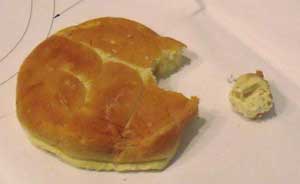I have been trying to get my plumber here to move some pipes, and I left a message for him on Sunday, but here it is Tuesday afternoon, and still no call back. So I guess I need to do it on my own. I have a 1/2" copper water pipe running along a wall, and ending in a 90 degree turn out and then a shutoff valve. I need to cut off the 90 dgree turn/valve combo, and then extend the 1/2 copper tube another 12 inches, and then add on a 90 degree turn. Then I need another 6 inches of copper tube, and then a 90 degree and a new shutoff valve. The issue is that this copper tube runs right next to the wall.
1) what do I cut it off with? There is not enough space to use one of those twist around cutoff tools. Can I just get a cut off wheel for my grinder and use that to slice the old one off with?
2) How about soldering a new one on? Since I am right next to the wall, how can I be sure not to burn down the place? Also, I can't get the flame on the side where the wall is. Will this matter?
3) I saw pre-solder supplied fittings at Homers. Do these work well?
1) what do I cut it off with? There is not enough space to use one of those twist around cutoff tools. Can I just get a cut off wheel for my grinder and use that to slice the old one off with?
2) How about soldering a new one on? Since I am right next to the wall, how can I be sure not to burn down the place? Also, I can't get the flame on the side where the wall is. Will this matter?
3) I saw pre-solder supplied fittings at Homers. Do these work well?

